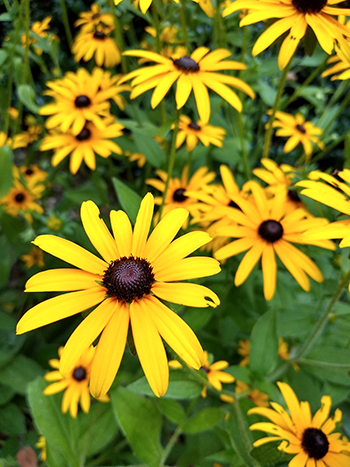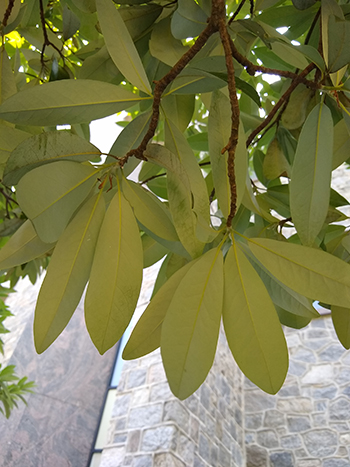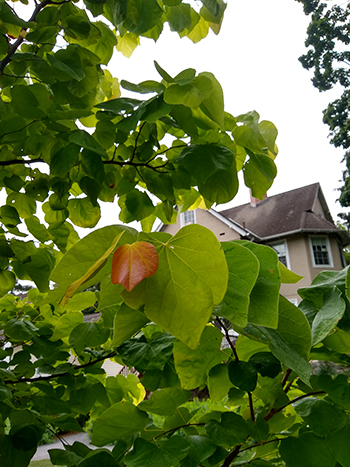
Plants of the Week: August 30
Guest Author: Ellie Hollo

Rudbeckia hirta, black-eyed Susan, is one of my favorite summer flowers, so I was delighted to discover this planting at the bottom of the Winter Garden. Black-eyed Susan is a native, short-lived perennial which blooms in mid to late summer. It is easily recognizable by its structural resemblance to a daisy, courtesy of being in the Asteraceae family, and its golden yellow petals offset by a black center.
Black-eyed Susan flowers are a perfect addition to a pollinator, wildflower, or meadow garden. They will continue to multiply and spread via stolons and seeds after you add them to your garden. Black-eyed susans commonly grow along highways and roadsides in the Philadelphia area, so keep an eye out for a black and gold flower next time you’re driving. Photo credit: E. Hollo

Magnolia virginiana var. australis ‘Henry Hicks’, sweetbay magnolia, is an evergreen, midsize tree native to the Southern United States. Its fragrant, cream-colored flowers bloom starting in mid-spring and continue blooming into the early summer. Flowers eventually mature into cones with large, bright red seeds. I chose to feature the ‘Henry Hicks’ sweetbay magnolia now, even though it’s not currently in bloom, because I was struck by its gorgeous foliage. The leaves are long and lance-shaped, with a minty-green top and silvery-green underside. If you visit Scott Arboretum’s ‘Henry Hicks’ sweetbay magnolia, located in the Isabelle Cosby Courtyard, I recommend standing under the tree and looking up at the undersides of the leaves for a full appreciation of the silver color. Photo credit: E. Hollo

Time for one final redbud cultivar! Cercis canadensis ‘JN2’, sold as The Rising Sun™, has multi-colored, slightly variegated foliage, which emerges pinkish-yellow, and then fades to golden-yellow before finally turning green. The yellow leaves at the tip of this redbud’s branches give the whole tree a lighter feel and a golden glow from a distance. These leaves are also ever so slightly frilly, and some leaves have faint dark green speckles.
Like other redbuds, the rising sun features rosy pink spring blooms, and as one of the smaller redbud cultivars, the rising sun only grows about 8 to 12 feet tall. Scott Arboretum’s specimen can be found on the side of Whittier Hall. Photo credit: E. Hollo





No Comments